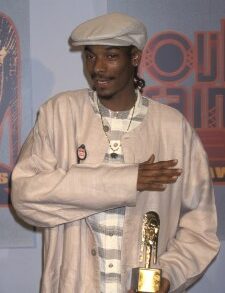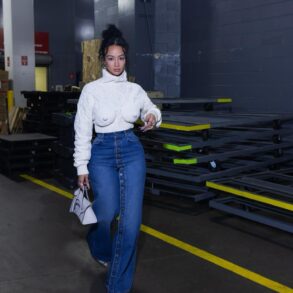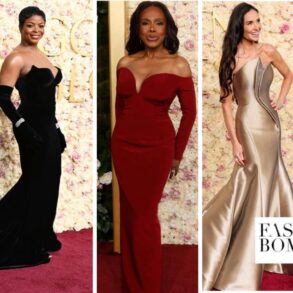Jared Pellerin, aka Pell, caught national attention in 2014 with his debut project “Floating While Dreaming,” going on to support G-Eazy and Kehlani on tour and headlining his own national tour in 2016. After a stint in Los Angeles, he returned home and co-founded glbl wrmng, a collective of New Orleans-based musicians and artists. Now 31 years old, Pell released “Floating While Dreaming II” in 2021 and is putting the final touches on the second glbl wrmng album.
Gambit: What was your introduction to hip-hop?
Pell: My first introduction to hip-hop was The Box (TV channel). I think it was channel 70. They used to play music videos all day — or at least when I was watching — and I saw a couple of Cash Money videos during the great era that is Cash Money.
That was my first awareness of things that were tied to local culture. I didn’t know how big Cash Money was because I was just a kid, but I was like, “Oh, this looks like streets I know in New Orleans.” I feel like that’s what made it kind of real to me.
I remember hot summer months being inside and watching The Box and really seeing that. I think (Big Tymers’) “#1 Stunna” caught my eye for real.
My uncle actually used to have a store on Magazine that now is currently Shaya. They sold beepers behind this other store called Ebony Square. That was his business. And one time when I was visiting my uncle, none other than Mystikal walked in, I guess to get a beeper at the time. It was just so crazy to see that.
Gambit: Who was the first New Orleans hip-hop artist that you admired?
Pell: [Lil] Wayne. I think there’s no way that you can’t, or at least in my generation, let me put it that way. Because he’s done so much for the landscape of not just New Orleans but hip-hop at large. It changed the way I thought about how you could do things.
His flows, the punch-line wrap, the way that things made sense, and these twisted similes and metaphors were just things that people weren’t saying. People weren’t using that creativity in the same way as Wayne was. And then this swagger, overall — just the energy, the charisma, I think, made it more than what I felt like I was listening to before, which would be a little bit more of the gangsta style. It was like, “Yeah, there’s a little bit of gangsta in here, but it’s also like, the guy is cool as fuck.”
Wayne is a real icon, and he’s definitely the first one in music that I admired in that way.
Gambit: Well, you may have just answered this, but what do you think New Orleans’ most significant contribution to hip-hop has been?
Pell: I know, right? How do you avoid saying Wayne?
No Limit has done a thing, like Mystikal, and there’s also Silkk the Shocker and C-Murder. We put a lot of GOATs in the industry. There’s a lot of talent. You got Mac Phipps. And even some of the newer artists.
But I think there’s less mono-cultural moments that happen in rap than when I was a kid, and I think it’s because of the timing of Cash Money and because of the timing of Lil Wayne. It’s hard to imagine anything topping those moments.
Remember the week that “Tha Carter III” came out? It came out the same [day] as “Seeing Sounds” by N.E.R.D. I remember that because I’m a huge Pharrell fan. I love Pharrell, and I definitely was buying all BBC [Billionaire Boys Club] and ICECREAM [clothing] with my parents’ debit card. When those two dropped at the same time, I listened to “Seeing Sounds” first, because I was just a huge fan. But I remember once Wayne sold that million in the first week, I was like, “Oh my God, let me go back and listen to it.” And I realized why it sold a million in the first week.
People started paying attention to like, “Oh, they’re doing numbers.” It’s not just something that’s cool in the streets. It’s also these kids in the suburbs, these kids everywhere listening to it — which it always has been. But that was coming to the forefront with the business behind it.
[Wayne] changed the landscape with how people perceived or how fans engaged with artists and supported them in the first week of their album. People paid attention to numbers and stuff like that. You could make an argument that that has played into how we pay attention to first week streams. That’s not supposed to matter to the fan, but if you’re from the bottom, if you’re from New Orleans, if you’re from a situation where people aren’t paying listening to you — to have over a million people buying your CD changes the narrative of what can be done.
Wayne has been that big of an artist — but that’s not to shy away from all the other artists that have done really amazing things, like shout out to Curren$y. And then Juvenile, of course. I’m so happy Juvie is having his resurgence in the streets.
Juvie has such a style and a charisma, too, that people paid attention and were like, “Oh wait, we love this” to the point where [“400 Degreez”] sold like crazy. “Back That Azz Up” is hip-hop canon of greatness.
I also want to shed light on newer artists, too. There’re moments happening now with Rob49. Shout out to Stone Cold Jzzle. Shout out to glbl wrmng. $leazy EZ is having a big moment. We have a really bright future ahead.
Also, it’s crazy to see that we’ve already had so many iterations of what the New Orleans sound is. I think that’s an interesting thing to point out: the idea of how shit has shifted so much. The Cash Money era and No Limit era to the Jet Life era to what we have now with glbl wrmng and FREEWATER and Rob49.
It’s so diverse, and I think that can’t be said about a lot of other cities. A lot of other cities that are hubs for music, usually try to uniform their sound or convert their sound to fit into a box. Now, I feel like in New Orleans we’re witnessing a renaissance of expression from all the different corners. We’ve got 17 different wards, so we got 17 different experiences needed to be represented.
Gambit: You moved away for a few years, but then you made the choice to move back to New Orleans. And with glbl wrmng, you’ve been intentional about investing time and effort in the city. What do you think is needed to make a New Orleans musician successful in their hometown?
Pell: From the artist’s standpoint, I think there’re ways that New Orleans artists can uplift themselves. We do have the power to help ourselves. I think a lot of times, it’s about, like, “Oh, wait, they’re not funding this or not funding that.” We absolutely know that is true. But I think we’ve shown also at the same time that we have some of the hardest working artists in the world. What it takes is to have that hustle and that drive. You’re in a music-dense city, where everybody is attached to art in some type of way.
Having that hustle is key in creating a sustainable career. But when it comes to creating infrastructure in the city, the thing comes down to supporting when nobody is watching, and I mean that from a tourism standpoint. There’s certain things we focus on when people come into town. We build up these huge things to attract people from out of town, but when those people go back home, we gotta make sure we pay attention to the people in our backyard.
We can make sure there’re minimums that are met, for things like how much an artist gets paid for a show. We should raise the bar on what that is. And that’s just on the live side.
On the financial side, developing artists and empowering them to be their own businesses. If you know better, you do better. I think being able to identify what each artist needs and also passing on the knowledge of the business side — every artist needs something different, I can’t say there’s something uniform other than I think everybody needs to know how to operate within their economic environment.
Down here, there’s different ways [musicians operate]. There’s a singer somewhere singing every other night and can afford their house and car and other things. And then there’s a singer that’s working in the studio but doesn’t want to perform like that. Still, that doesn’t mean that the songs they’re cranking out couldn’t be No. 1 hits — they’ll need a different type of attention to the marketing or something else.
It’s just empowering each other with information. The future is the artist becoming their own business and using that power to transform the local economy at large.
I’ve seen it with glbl wrmng already. Everybody has their own skills and their own things they have to take care of for themselves. But when we come together, there’s a pool of resources that has arisen out of us understanding the business behind our music.
Gambit: What has hip-hop come to mean to you?
Pell: It’s the voice of the people. It’s a connection that I otherwise wouldn’t feel to a lot of people. I think it’s become a universal language for how we, all of us, make magic out of thin air.
Hip-hop has allowed us to be so expressive, dig at those pieces of us that maybe some other genres and maybe some other art forms shy away from. I think there’s something so special about the rawness of hip-hop that becomes a conduit for connection that a lot of other ways that we communicate with one another can’t.
There are things that I don’t even know how to articulate when I’m communicating with somebody. And then I go and turn around and put that on rhyme, and it’s like, “Oh wow, wait, that’s how I felt.” It creates that level of communication and connection to myself that allows me to connect with others. Hip-hop is my connection to the world.
This post was originally published on this site be sure to check out more of their content.






